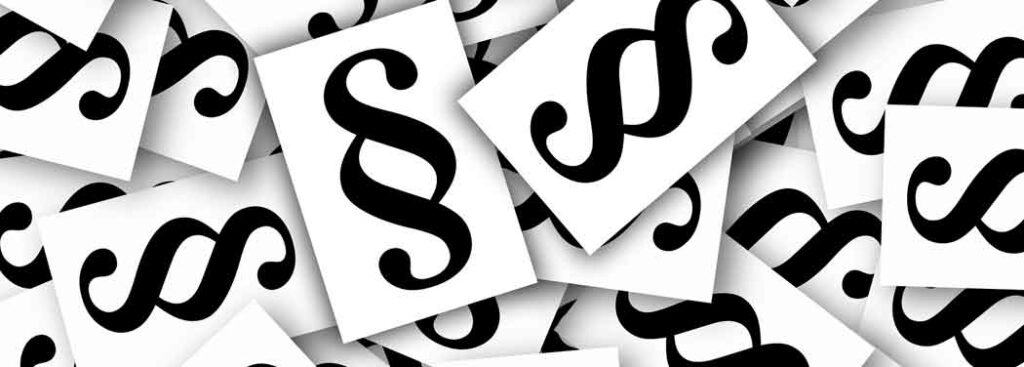The Ultimate Guide for Nonfiction Print On Demand Books

Prior to the development of high-speed, print on demand digital presses, there were no other options in order to produce print quality runs cost-effectively than using the more traditional offset presses.
Offset printing had been perfected over the decades to squeeze out as much unit cost as possible from book production by increasing economies of scale (mainly through achieving very high operating speeds).
However, the only way to get low costs per unit was to commit to a high volume of books per print run. Now, when it came to authors with an existing following and sales history from previous books, print runs were quite easy to predict.
But when it came to new authors, this printing technology resulted in a huge waste of book inventory as publishers were required to print too many copies without having clear sales forecasts.
The Print on Demand Books Revolution
With the popularity of the nascent self publishing industry in the early to mid-90s, as well as the increased profile of smaller indie presses, equipment manufacturers that supplied printers realized that new options were needed to keep a low inventory of books at all times, minimizing costs per unit and overall shipping costs.
Even though digital printing technology was well-developed at the time, it was mainly targeted at the photocopy business, which was too high-cost/low-speed for volume printing applications.
However, through research and development, manufacturers were able to create higher and higher speed digital presses with progressively better and better print quality for on demand printers. By the end of the 90s, the first large scale, high speed, high quality digital printing presses began to appear.
The book distributor Ingram was one of the first print on demand service to install large banks of high-speed digital presses to produce short print runs in color or black and white cost-effectively, followed a few years later by Kindle Direct Publishing (KDP), a subsidiary of Amazon. Many traditional printers also invested in digital presses to minimize the size of their inventory.
Today, digital technology has improved to the point of being able to produce high print quality images that are cost effective at low volumes and nearly indistinguishable from the high quality standards of offset printing.
Introducing the Two Main Players

There are currently two large players in the print on demand books arena who’ve developed not only global print on demand service networks with facilities around the world, but also the software platforms necessary to distribute titles globally at a very low-cost for people like you who interested in self publishing books.
The first player is Amazon’s Kindle Direct Publishing (KDP), which is the distribution portal for self-publishers and small indie presses to have their books appear on Amazon.
KDP has high quality on demand printing facilities in North America, Europe and Japan, so when readers in any of those markets purchase copies of your book on Amazon, a local copy is printed in near-real time and then delivered domestically to the end user at the lowest possible shipping rates.
The convergence of technologies of the internet, eCommerce and distributed printing facilities managed to remove the biggest barrier to global book sales – the high rates when shipping around pre-printed inventory, giving rise to the world of print on demand books.
The second player is IngramSpark, a subsidiary of book distributor giant Ingram. What KDP does for online book distribution, IngramSpark does for brick-and-mortar bookstores and libraries.
IngramSpark also operates print on demand books facilities in multiple countries through Ingram’s Lightning Source subsidiary allowing shipping to most customers at domestic rates. Specifically, they operate high-speed, on demand digital presses in the U.S., the U.K., France and Australia, offering similar coverage as Amazon’s KDP.
As a self published, nonfiction author your best approach is to self publish on both platforms simultaneously in order to the get best of both online and offline worlds at the best cost.
Amazon’s Kindle Direct Publishing (KDP)

Let’s look at the approximate costs to self publish on the KDP service.
KDP has no initial self publishing cost, although I highly recommend that you purchase your own ISBN, or book identification number. If you use the free ISBN supplied by KDP, you may lower your overall costs but you’ll be blocked from co-publishing your paperback with IngramSpark, which will lock you out of physical bookstores (which seldom order paperback books from KDP due to their low wholesale discount).
KDP Book Printing Cost
KDP won’t charge you in advance for the cost of paperback books sold through Amazon. Whenever they sell copies of your paperback book (this is the only format they produce at present), they’ll simply deduct their printing cost from the amount collected and forward you the remainder minus a distribution fee (more on this later).
The actual printing cost of your paperback will depend of the following options: the type of paper you choose, your book’s trim size, your page count and whether your book will be printed in color or black and white.
KDP Bookstore Discount
KDP only offers a flat 25% discount to brick-and-mortar book sellers, whereas the expected industry discount is 40%. As a result, retailers don’t typically order books from KDP because most would be doing so at a loss.
KDP Self Publishing Royalties
KDP will take pay you 60% of your book’s list price minus the printing cost as a royalty and keep the rest as their commission for distributing copies of your book through Amazon.
KDP Volume Discounts for Author Orders
Although KDP allows authors to purchase books at cost, they don’t offer volume discounts. So, if you purchase a large order to fulfill back-of-the-room sales for a number of speaking events, you won’t be able to reduce your costs (Note: this is the downside of KDP, however, there’s a workaround that I’ll cover later.)
KDP Expanded Distribution
This is a feature where you can enable KDP to distribute your title to the book trade outside of Amazon. If you do, your royalties decrease from 60% of your list price to 40% minus the printing cost. Out of the remaining 60% that KDP retains when they sell your book, they extend a 25% discount to book retailers and keep the remaining 35% as their own distribution fee.
Now remember that book retailers will not order from KDP at this low discount rate because it increases their costs way too much, so make sure that this feature is disabled for your title in order to prevent KDP from taking an order for inventory from physical book retailers.
IngramSpark Self Publishing Service

Unlike KDP, IngramSpark does charge a small fee when you upload print files. Specifically, they’ll charge you $49 per book format. But they do have a significant upside: they can print both paperback and hard cover formats (KDP only supports paperbacks), which gives you the ability to offer your title at two different price points (Note: you’ll need to supply a separate ISBN for each book format.)
IngramSpark Book Printing Cost
IngramSpark deducts the printing cost from the sales of book copies after receiving payment from customers. This amount will depend on the following options: the type of paper you choose, your book’s trim size, your page count and the book’s format (paperback or hard cover).
IngramSpark Bookstore Discount
Ingram offers brick-and-mortar book retailers the standard industry wholesale discount of 40%, which makes them their preferred choice for book distribution as it lowers their costs compared to ordering books from KDP.
Now, over the years, they’ve come up with a flexible discounting scheme that allows you to set a lower bookstore discount and keep a higher royalty, in order to offer a competitive counterpart to KDP’s approach. However, any discounting below 40% will result in book retailers not ordering your title for their customers, so make sure you always set your title’s discount at the expected 40%.
IngramSpark Self Publishing Royalties
IngramSpark offers the following royalty scheme:
- You can choose a bookstore discount of between 30% and 55%.
- Out of the above range, IngramSpark keeps 15% as their distribution fee so book retailers will get an actual discount of between 15% and 40% (as stated before, a bookstore discount lower than 40% will result in no book sales due to a lack of margin).
- You get paid the remainder, between 70% and 45% as your royalty minus the printing cost. Again, for all practical purposes, the only figure that’s meaningful is a royalty of 45% of your list price minus the printing cost.
IngramSpark Volume Discounts for Author Orders
This is the area where IngramSpark really shines: the generous volume discounts and shipping options they offer to people ordering their own books, which allows you to save a lot of money. Not only will you be able to buy high quality books at cost, but they also offer volume discounts that make ordering through Kindle Direct publishing unnecessary.
Here’s an example: Say that you’re printing a black and white paperback with a 200 page count. Your IngramSpark printing cost will be approximately $3.69 per book, but if you order 1,000 copies you’ll get an additional 40% discount off the unit price which will result in a significant break that you can apply to eliminate your shipping charges compared to KDP.
So, let’s assume that you pay the same unit cost of $3.69 per book both with IngramSpark and KDP (their pricing structures are similar for the same number of pages and trim size). Instead of paying $3,690 at KDP ($3.69 x 1,000) you’ll only pay $2,214 at IngramSpark ($3.69 x 1,000 x 60%). That’s a savings of $1,476!
IngramSpark Online Bookstore Distribution
Although IngramSpark will also distribute your title to online retailers including Amazon, you still also need to publish directly to Amazon through KDP.
First of all, you’ll get a higher royalty for Amazon sales if you go through KDP (60% minus printing cost vs. 45%), but also, Amazon is known for prioritizing KDP-distributed books over others when customers order books through Amazon.
Although they’ve never publicly admitted to this practice, it’s been observed over the years that KDP books always show up on Amazon with a status of “Available Immediately” whereas IngramSpark-distributed books often appear with a status of “Not in Stock,” even though they operate a print on demand service as well.
In Conclusion
As a self published writer of nonfiction, you always want to gain the maximum possible exposure for your book at the lowest printing cost without having to keep books on inventory. Both IngramSpark and KDP options have created powerful high quality distribution platforms in order to help you achieve this goal, but they have different strengths and weaknesses.
Fortunately, these distribution platforms happen to be complementary and by self publishing your book using both options you’ll get the best service for your customers – global reach through online retailers and brick-and-mortar book retailers at a very low rate of distribution and shipping.
If you enjoyed this article and are in the process of self publishing or have self published a nonfiction book be sure to check out my free nonfiction success guide, drawn from years of experience editing books for bestselling authors (including a New York Times bestseller) and ghostwriting for CEOs and politicians. Simply click here to get instant access.
Ben
Leave me a comment below if you have any questions about print on demand books or self publishing distribution in general – I operate an author services firm that specializes in helping entrepreneurs, professionals and business owners who want to self publish books as a calling card for prospects, to establish their status as an expert or to just to generate additional leads for their businesses.
Here are some related posts I highly recommend:
How to Write a Compelling Book in 12 Steps: A Must-Read Guide for Nonfiction Authors
How to Grow Your Business Writing a Nonfiction Book
How Long Does it Take to Write a Book to Help Grow Your Business?
5 Book Cover Maker Mistakes to Avoid When Designing a Nonfiction Cover
20 Powerful Ideas to Promote Your Nonfiction Book
Write Your Own Book and Become an Expert: 11 Reasons Why You Should

Bennett R. Coles is an award-winning author of six books published through Harper Collins (New York) and Titan Publishing Group (London). He is also the publisher at Promontory Press, editor for multiple bestselling authors (including a NY Times bestseller), ghostwriter for CEOs and politicians and the founder of Cascadia Author Services, a boutique full-service firm that specializes in premium author services specifically designed for busy professionals who want to be self published. Our end-to-end services include writer coaching, ghostwriting, editing, proofing, cover design, book design and layout, eBook production and publishing, marketing, print on demand books and distribution.
-
Hi Bennett, can one price their book below KDP’s on one’s own website? Thanks, Gary
-

Hi Gary, Since Amazon’s inception they enforced a “price parity” rule that disallowed vendors from selling their products at a lower price anywhere else (including a vendor’s own website). Due to pressure from governments, they quietly dropped this rule first in Europe a few years ago and finally last year in the US. So, the short answer to your question is, yes you can now price your book lower on your website. The long answer, however, is that I wouldn’t recommend it because while you’ll no longer be infringing on their terms and conditions, there’s a good chance that their product ranking algorithm will view this as a negative signal and give your book a lower priority in their cross-marketing pecking order. Although this isn’t cast in stone, there’s been anecdotal evidence of products that are priced higher on Amazon losing ground to similar products that still follow the old price parity rule. My advice: proceed with caution.
-
-

Hi Ben,
Thanks for this great article, I found it very helpful…cheers -

Hello,
Great article. I found this KDP print cost and royalty calculator very helpful when deciding if self-publishing was the route for me or not:







Leave a Reply